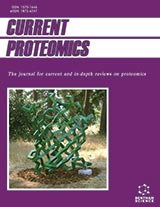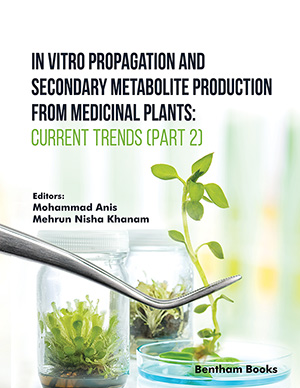
Abstract
Background: Some natural pancreatic lipase inhibitors with fewer side effects are proposed. As a traditional Chinese medicine, Shuangdan Capsule (SDC) has been used for the treatment of higher lipid in blood, which is mainly composed by Radix Salviae and Peony skin.
Objective: This work is aimed to investigate the molecular mechanism of the constituents from this SDC against metabolic disorders, the molecular flexibility and intermolecular interactional characteristics of these components in the active sites.
Methods: The small molecules were obtained from the Traditional Chinese Medicine Database TCM database, the systems-level pharmacological database for Traditional Chinese Medicine TCMSP server was used to calculate the ADME-related properties. Autodock Vina was used to perform virtual screening of the selected molecules and to return energy values in several ligand conformations. The network parameters were calculated using the network analyzer plug-in in Cytoscape.
Results: The most active six molecules are all enclosed by amino acids ASP79, TYR114, GLU175, PRO180, PHE215, GLY216 and LUE264, among which, hydrophobic interaction, hydrogen bond and repulsive forces play extremely important roles. It is worth noting that most of the local minima of molecular electrostatic potentials on van der Waals (vdW) surface are increased while the maxima negative ones are decreased simultaneously, implying that the electrostatic potential tends to be stable. From the topological analysis of the Protein-Protein Interaction (PPI) network, PNLIP related genes are also proved to be pivotal targets for hyperlipidemia, such as LPL, AGK, MGLL, LIPE, LIPF and PNPLA2. Further GO analysis indicated that lipophilic terpenoid compounds may reduce the blood lipid by taking part in the lipid catabolic process, the extracellular space and the cellular components of the extracellular region part and the triacylglycerol lipase activity.
Conclusion: This study provides some useful information for the development and application of natural hypolipidemic medcines. Further pharmacologically active studies are still needed both in vivo and in vitro.
Keywords: Pancreatic lipase, molecular docking, quantum chemical calculations, molecular electrostatic potential, proteinprotein interaction, hypolipidemic.
[PMID: 26417311]
[http://dx.doi.org/10.1038/oby.2002.203] [PMID: 12490659]
[http://dx.doi.org/10.1038/35007508] [PMID: 10766250]
[http://dx.doi.org/10.1111/obr.12440] [PMID: 27405510]
[http://dx.doi.org/10.1038/nrd1469] [PMID: 15286736]
[http://dx.doi.org/10.1016/j.drudis.2007.07.024] [PMID: 17933690]
[http://dx.doi.org/10.7164/antibiotics.40.1086] [PMID: 3680019]
[http://dx.doi.org/10.1038/sj.ijo.0803446] [PMID: 16953261]
[http://dx.doi.org/10.1155/2008/609039] [PMID: 18209783]
[http://dx.doi.org/10.1055/s-0035-1546173] [PMID: 26132857]
[http://dx.doi.org/10.1111/j.1750-3841.2012.02848.x] [PMID: 22889371]
[http://dx.doi.org/10.1016/j.aca.2011.04.007] [PMID: 21601031]
[http://dx.doi.org/10.1016/j.aca.2011.10.062] [PMID: 22200318]
[http://dx.doi.org/10.1016/j.chroma.2013.04.016] [PMID: 23647610]
[http://dx.doi.org/10.1021/jf047814+] [PMID: 15913331]
[http://dx.doi.org/10.1016/j.aca.2013.03.028] [PMID: 23622964]
[http://dx.doi.org/10.1016/j.jep.2012.01.027] [PMID: 22306102]
[http://dx.doi.org/10.1016/j.jep.2014.04.023] [PMID: 24751362]
[http://dx.doi.org/10.1016/j.fitote.2003.08.016] [PMID: 14693219]
[http://dx.doi.org/10.1186/1758-2946-6-13] [PMID: 24735618]
[http://dx.doi.org/10.1002/jcc.21256] [PMID: 19399780]
[http://dx.doi.org/10.1007/s10822-010-9352-6] [PMID: 20401516]
[http://dx.doi.org/10.1002/jcc.22885] [PMID: 22162017]
[http://dx.doi.org/10.3892/ol.2019.10521] [PMID: 31423264]
[http://dx.doi.org/10.3390/genes10080620] [PMID: 31426352]
[PMID: 27042060]
[http://dx.doi.org/10.1155/2017/3709874] [PMID: 28190938]
[http://dx.doi.org/10.1016/j.jep.2008.07.013] [PMID: 18691646]
[http://dx.doi.org/10.1002/ptr.2426] [PMID: 18668491]
[http://dx.doi.org/10.1016/j.cbi.2013.05.002] [PMID: 23684744]
[http://dx.doi.org/10.1016/j.bioorg.2019.103101] [PMID: 31291611]
[PMID: 3176980]
[http://dx.doi.org/10.1038/s41401-018-0010-1] [PMID: 29795134]
[http://dx.doi.org/10.1021/acs.jnatprod.5b00516] [PMID: 26339922]
[http://dx.doi.org/10.1080/14786419.2019.1607337] [PMID: 31104489]
[http://dx.doi.org/10.1155/2014/267976] [PMID: 25525444]
[http://dx.doi.org/10.1155/2012/716459] [PMID: 22454677]
[http://dx.doi.org/10.3892/mmr.2016.5133] [PMID: 27082100]
[http://dx.doi.org/10.1016/j.vph.2007.01.001] [PMID: 17337361]
[http://dx.doi.org/10.1016/j.ejphar.2011.10.040] [PMID: 22088276]
[http://dx.doi.org/10.1016/j.trsl.2012.01.008] [PMID: 22677363]
[http://dx.doi.org/10.1194/jlr.M040394] [PMID: 24302760]
[PMID: 26762059]
[http://dx.doi.org/10.1080/08923970801949133] [PMID: 18569089]
[http://dx.doi.org/10.3389/fphar.2016.00418] [PMID: 27891092]
[http://dx.doi.org/10.1016/j.atherosclerosis.2018.09.035] [PMID: 30347344]
[http://dx.doi.org/10.1016/j.phrs.2019.104254] [PMID: 31054311]
[http://dx.doi.org/10.1371/journal.pone.0162414] [PMID: 27617748]
[http://dx.doi.org/10.1007/s00894-016-2967-3] [PMID: 27029622]
[http://dx.doi.org/10.1039/b813008f] [PMID: 19005598]
[http://dx.doi.org/10.1016/j.saa.2019.117188] [PMID: 31176999]
[http://dx.doi.org/10.1016/j.saa.2019.117200] [PMID: 31176161]
[http://dx.doi.org/10.1007/s00894-018-3888-0] [PMID: 30603796]
[http://dx.doi.org/10.1016/j.saa.2013.10.048] [PMID: 24247099]
[http://dx.doi.org/10.1016/j.saa.2010.09.016] [PMID: 20940104]
[http://dx.doi.org/10.1016/j.saa.2012.11.008] [PMID: 23274253]
[PMID: 31327968]
[http://dx.doi.org/10.1158/1078-0432.CCR-13-0209] [PMID: 23918603]
[http://dx.doi.org/10.1186/s12864-016-3265-2] [PMID: 28198679]
[http://dx.doi.org/10.1248/bpb.b18-00756] [PMID: 30828075]
[http://dx.doi.org/10.1248/bpb.32.1142] [PMID: 19571375]
[http://dx.doi.org/10.3892/mmr.2016.5135] [PMID: 27082415]
[http://dx.doi.org/10.3389/fphys.2016.00298] [PMID: 27493631]
[http://dx.doi.org/10.1016/j.intimp.2003.12.013] [PMID: 14996419]
[http://dx.doi.org/10.1155/2015/295706] [PMID: 26379740]
[http://dx.doi.org/10.1016/j.jss.2016.11.020] [PMID: 28550918]
[http://dx.doi.org/10.1007/s00216-019-01818-x] [PMID: 31089788]
 20
20



























